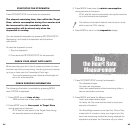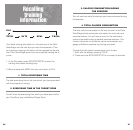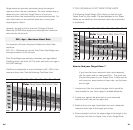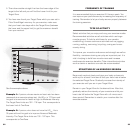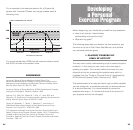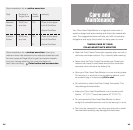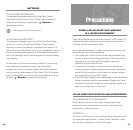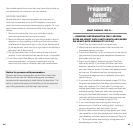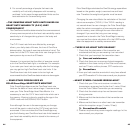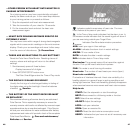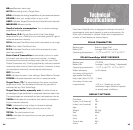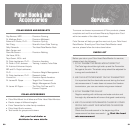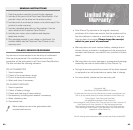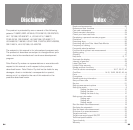
43
42
Frequently
Asked
Questions
WHAT SHOULD I DO IF...
... OWNZONE DETERMINATION ONLY SELDOM
GIVES ME HEART RATE LIMITS WHICH ARE BASED
ON HEART RATE VARIABILITY (O.Z.V)?
1. Check that the elastic strap is snug enough.
2. Make sure that the electrodes of the transmitter are
moistened against your skin.
3. Put on the transmitter 15-20 minutes prior to the start of
your exercise to ensure good adaptation between the
electrodes and your skin.
4. Start the first stage of determining your OwnZone
sufficiently slowly. If you obtain the heart rate limits
based on age within the first 2 minutes you have raised
your heart rate too quickly. The heart rate reading should
not rise over 20 beats/minute from the starting level.
During the first stage you can, for example, put on your
sports clothing.
5. If you reach the OwnZone limits based on age (O.Z.A) or
the previously determined OwnZone limits based on your
heart rate variability (O.Z.L) only after 10 minutes from
starting specification you have not raised your heart rate
sufficiently rapidly. Raise your heart rate more quickly
during the OwnZone determination. Your OwnZone heart
rate limits will be found at the latest when your heart rate
is in the heart rate zone based on age (O.Z.A).
6. If you have always used walking and running to
determine your OwnZone, walking uphill, cycling or
using an ergometer may work better for you.
7. Stress or heavy mental loading may reduce your heart
rate variability so that the needed point where the heart
rate variability vanishes cannot be measured. Relax for
5 - 10 minutes before exercising by sitting down and
decreasing your heart rate.
Non-coded signals from more than one transmitter picked up
simultaneously can cause an incorrect readout.
EXERCISE EQUIPMENT
Several pieces of exercise equipment with electronic or
electrical components such as LED displays, motors and
electrical brakes may cause interfering stray signals. To try to
tackle these problems, relocate the Polar wrist receiver as
follows:
1. Remove the transmitter from your chest and use the
exercise equipment as you would normally.
2. Move the Receiver around until you find an area in which it
displays no stray reading or flashing of the heart symbol.
Interference is often worst right in front of the display panel
of the equipment, while the left or right side of the display is
relatively free of disturbance.
3. Put the transmitter back on the chest and keep the wrist
receiver in this interference-free area as far as it is possible.
4. If the Polar Heart Rate Monitor still does not work with the
exercise equipment, this piece of equipment may be
electrically too noisy for wireless heart rate measurement.
Notice for persons with pacemakers
Persons who have a pacemaker use the Polar Heart Rate
Monitor at their own risk. Before starting use, we always
recommend an exercise test under doctor’s supervision. The
test is to ensure the safety and reliability of the simultaneous
use of the pacemaker and the heart rate monitor.



